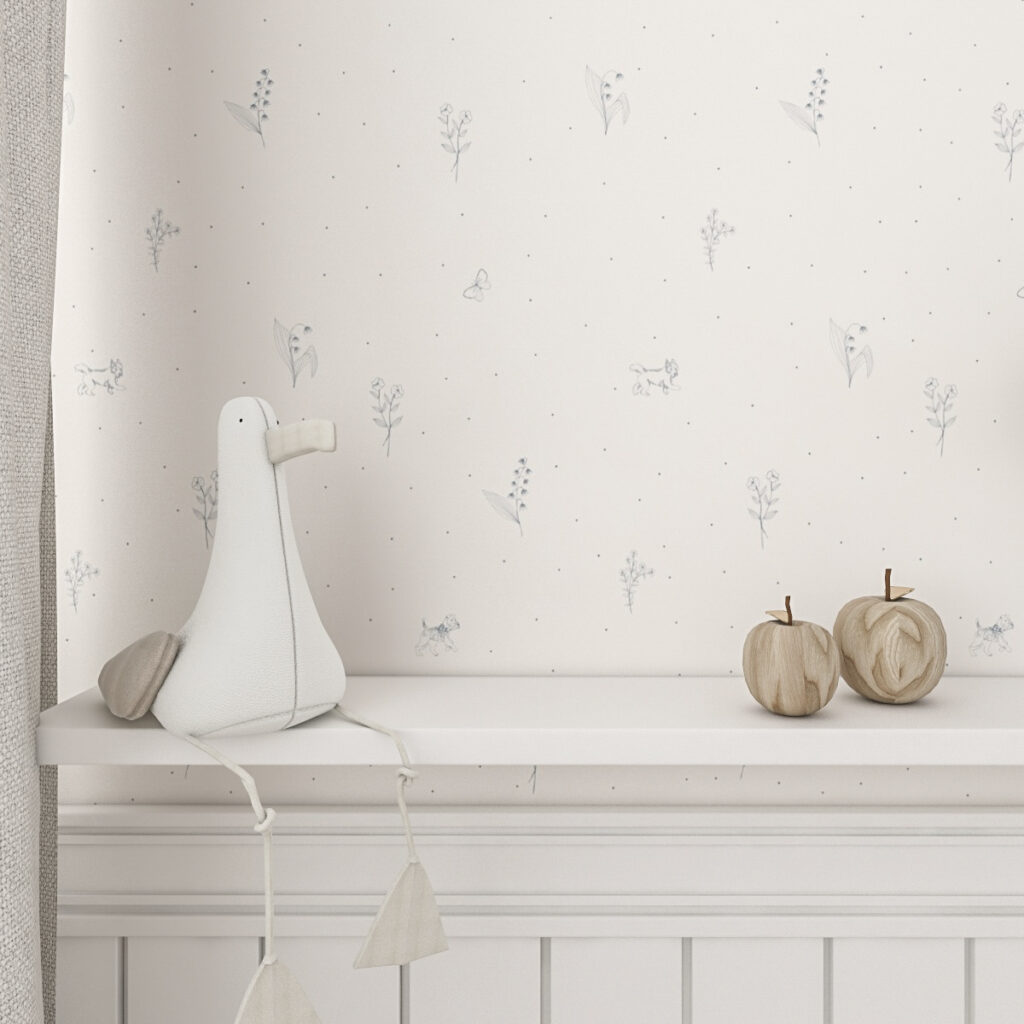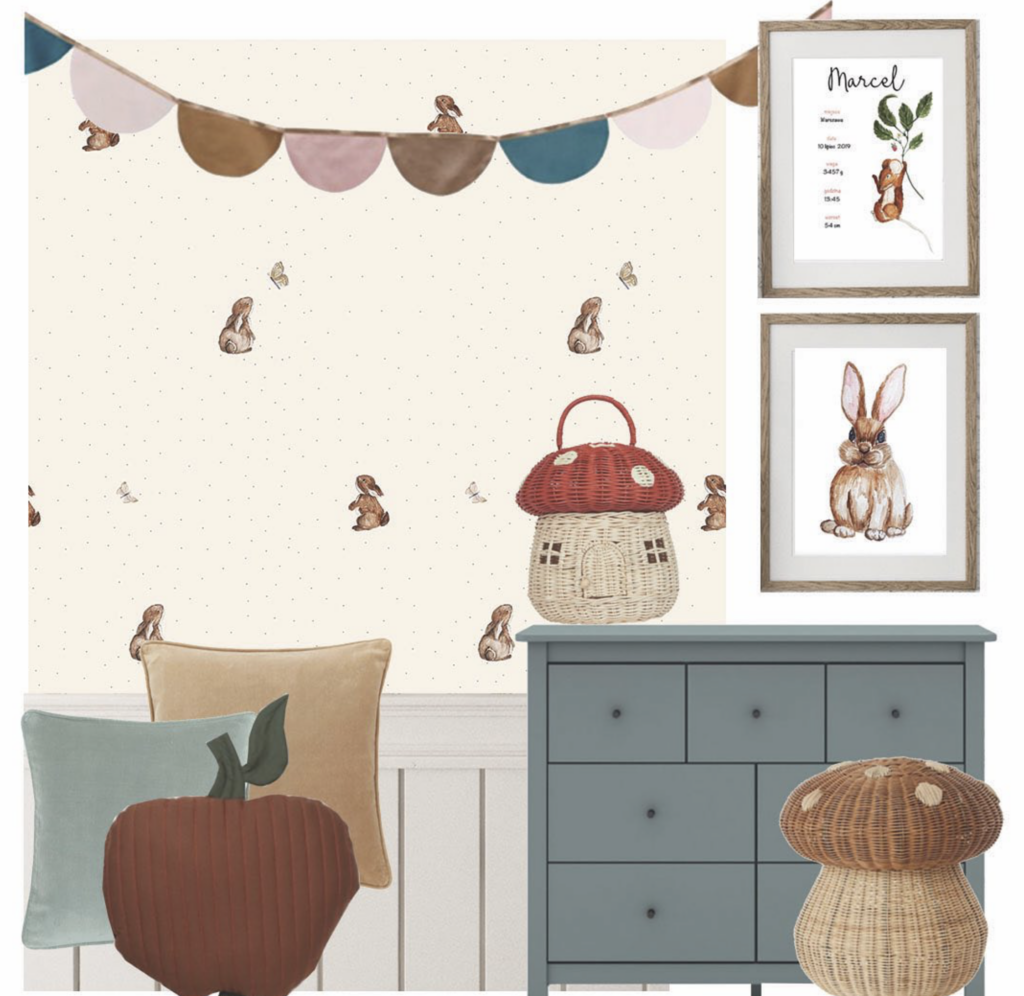Blog, A guide for you
When should a child have his own room? When to move a child to a separate room?
The answer to the question of whether a child should have its own room is one and that is: of course. Much more questionable is when to move a child to a separate room. Choosing the right time to move your child into their own room can have a significant impact on their development and well-being. But how do you recognize that this is the time?
Why should a child have his own room?
Depending on the available space in the house or apartment, a child can have a room just for himself or share it with his siblings. At a certain age, however, it is important for a toddler to have a room separate from the parents' bedroom.
- A child's own room provides a space in which the little man develops its independence and self-reliance. This is where the toddler learns to make his first decisions, such as what toys to choose to play with.
- The toddler has the opportunity for peaceful, undisturbed sleep and rest.
- During the day, the child enjoys an environment arranged for free play and learning.
- In their room, the child can learn from an early age compliance with certain rules, such as cleaning up toys or locking doors. This is the first step to learning responsibility and independence.
- Older children invite classmates into the room. They use the interior design to express your personality.
When to move a child to a separate room? 3, 5 or 7 years old? - myths about the ideal age
Each child develops at its own pace and has a different need for closeness with parents. For this reason, there is no single, top-down moment when a child's move to his room should take place. Some parents move as early as 6-month-old toddlers, while others only move preschool-aged children.

Myth 1: There is an "ideal" age for a move
This is perhaps the most popular myth about moving a baby to his room. Parents often feel pressure to "do it as soon as possible" or "wait until the right time." As a result, there are beliefs, for example, that 3 years old is the ideal age and 5 years old is a bit too late. The truth is that there is no universal age that is right for every child. Every toddler develops individually and has different needs. Some children are ready to move as early as age 2, while others need more time and parental closeness.
It is important for the child to feel that a parent will always be there for him in case of need, which after a while will prove positive for his psyche and emotional stability.
Myth 2: Moving into your own room is always a difficult experience
Moving into a room of their own can be difficult for some children, but that doesn't have to be the rule. Some children may experience trauma and stress, which manifests as crying, especially when the situation involves a lack of closeness to a parent. The key to success is empathy, understanding and patience. Parents should prepare the child for the change, talk to him about his fears and doubts, especially if he is afraid to sleep alone. It is also worth creating a friendly and safe atmosphere in the new room, involving the child in the process.
Myth 3: A child who sleeps with his parents is less independent
On the contrary! Proximity to parents, including sleeping with them in the same bed or room, gives a child a sense of security and confidence. A child who feels loved and accepted is more likely to explore the world and take on new challenges.
Take into account that sleeping together in the same room until the toddler is 12 months old reduces the risk of sudden crib death by 50%. For this reason, it is advisable that for the first year of life the toddler sleeps in the bedroom, such as in an extra bed for the parents. After this time you can think about moving the baby to his own bed.
When to prepare a room for a child?
Although the baby sleeps in the parents' room, there is nothing to prevent it from already having its own room waiting for it. You can gradually get your child used to it, thus building positive associations. Initially, the room can be used for changing, for example, and later also for playing, reading stories and drawing.
Furnishing a child's room you can plan for a long time ahead. Once the little one arrives in the world, redecorating and furnishing can be more challenging, so we encourage you to arrange your room before the baby is born. Later, all you need to do is change small details, which gradually the youngest household member also begins to decide.
Royal Rabbits specialists will help with arrangements
Children's room design is quite a challenge. You need to take into account many factors, such as the age of the child, his developmental needs, safety, functionality and aesthetics. If you don't feel confident in this topic, it's worth taking help from our specialists.

Up to what age can a child sleep in the parents' bedroom? The first signs of readiness for a room of their own
Sleeping with a baby as an infant not only has safety implications, but is also convenient for parents because it facilitates night feedings. For this reason, a good time to move a toddler to his own room can be a good time, when he is already sleeping peacefully through the night.
However, this rule does not always work - the child may still need close contact. Therefore, It is not surprising when a one-year-old child sleeps with his parents. Moreover, older children also have the right to do so, although it is worth gradually encouraging them to sleep in their crib, taking into account the child's readiness for this change.
Should a child sleep with his parents?
Ultimately, the decision about where a baby sleeps is very individual and depends on the needs of both the toddler and the parents. The most important thing is that the whole family feels comfortable and safe. However, Experts recommend that an infant sleep in the same room as the parents for at least the first 6 months, and preferably for the entire first year of life.
The child's own room vs. the kindergarten
If it was not possible before, it is worth trying to move the child to his own room when the toddler enters the preschool age. Although there is no clear answer to the question of when a child should sleep alone in a room, the special time of starting kindergarten is conducive to the development of an older child's independence (although drastic changes should still not be imposed on him).
In practice, it happens that a 4-year-old child sleeps with his parents because he falls asleep on his own, but wakes up during the night and goes to his parents' bedroom. Some children at this age do not yet feel the need to have their own room.

How to teach a child to sleep in his room?
Remember that children are sensitive to change. So it is important that the changes are gradual and in a way that the toddler understands.
- Arrange a cozy, safe space - Match the bright, pleasant colors of the room. Choose decorations that will appeal to the little one, such as. wall stickers with doggies.
- Talk to your child - Explain to him why he will sleep in a different room. Point out the positive aspects of the change, such as that he will have peace and quiet, more space, the opportunity to sleep with his favorite cuddly toys. Assure him that you will always come to him when he calls you.
- Ensure your toddler's sense of security - A turned-on night light will soothe the baby, and an electronic nanny will help parents sleep peacefully as well.
- Make changes gradually - At first, spend time together in the baby's room during the day, then organize naps there for the toddler. Over time, you can try putting your baby to sleep in his own room, for example, every other day. During this time, allow the toddler to come to your bedroom. Perhaps part of the night he will continue to sleep in his parents' bed.
A room of one's own is a child's kingdom!
Over time, every child appreciates his room. After all, this is where everything is for him, he gains privacy and a sense of security. Ultimately, you as the parent have the key influence on whether moving your child into his or her own room will be a difficult separation or a natural, stress-free process. Give time for your little one to gradually adapt to the changes. The most important thing is to carefully observe your child and be flexible in your decisions. It's not worth sticking to rigid time frames or advice from "experts" that doesn't necessarily fit our situation.
